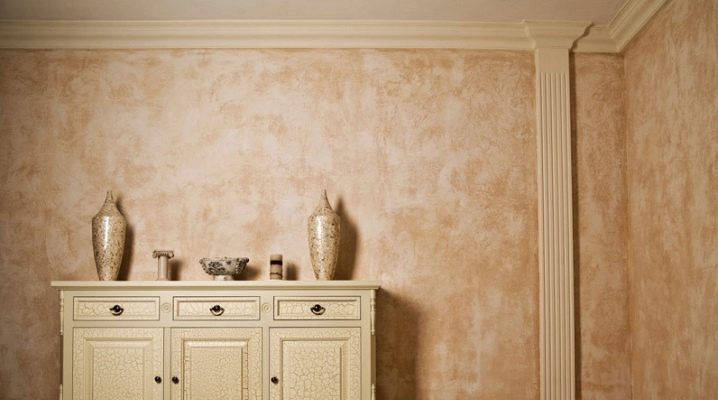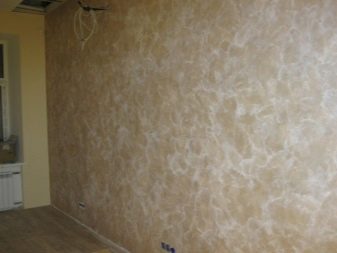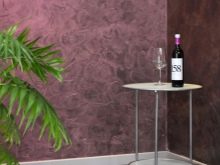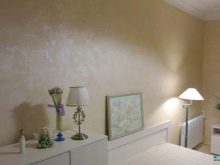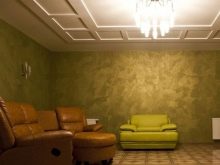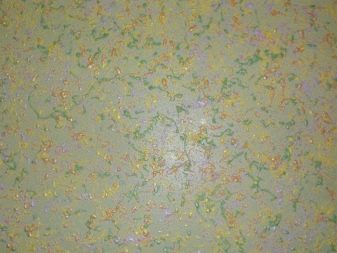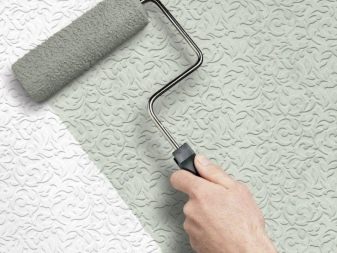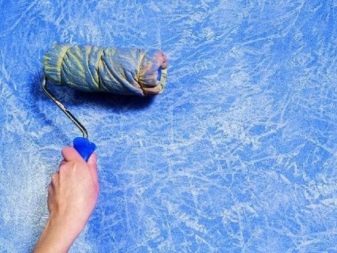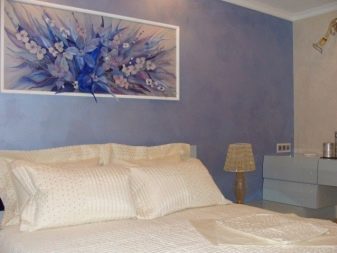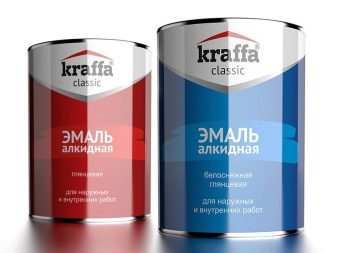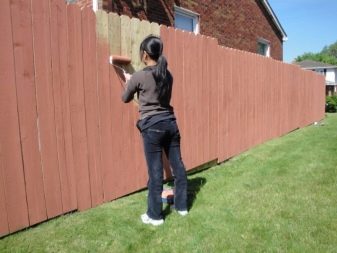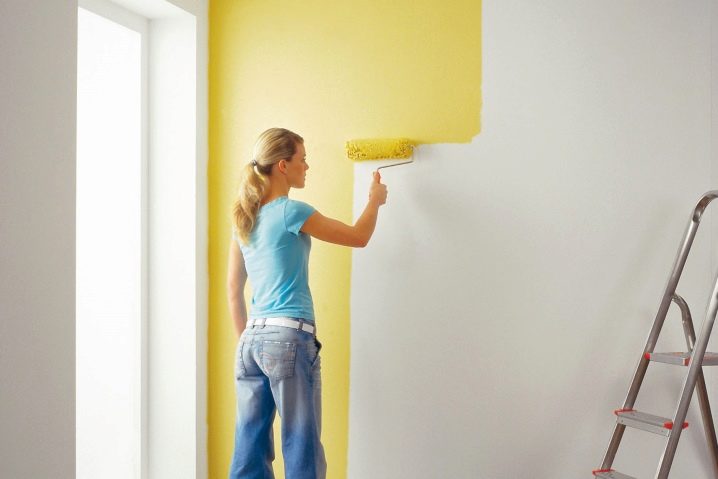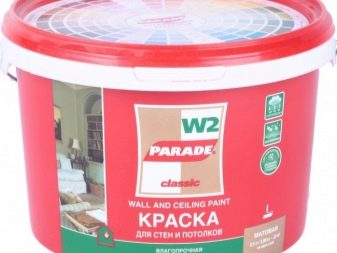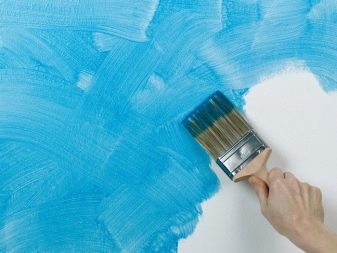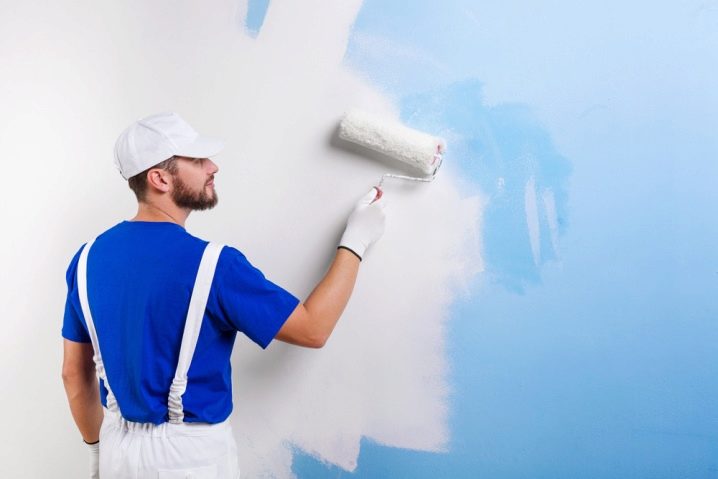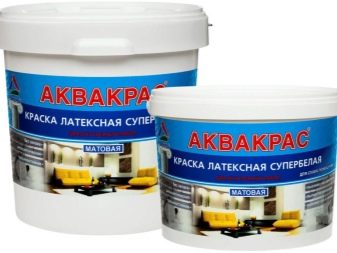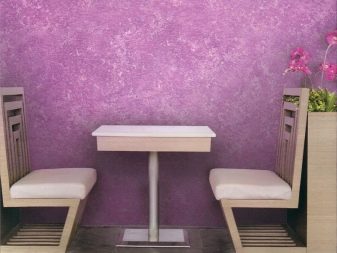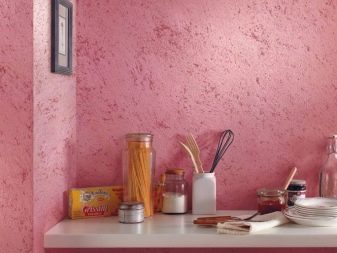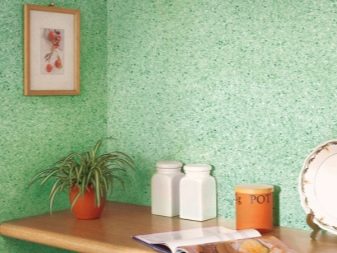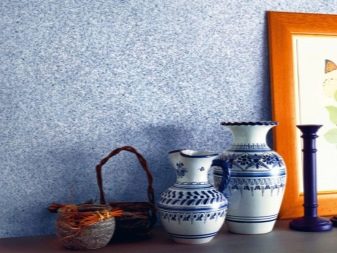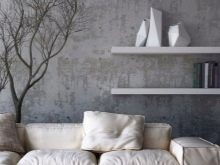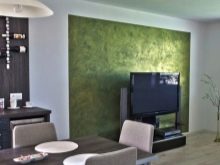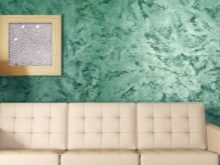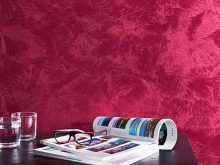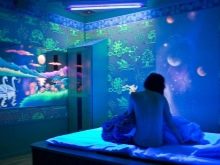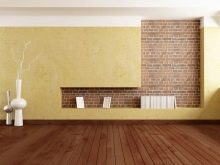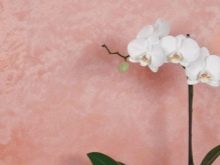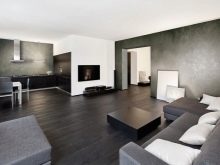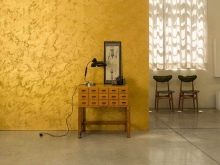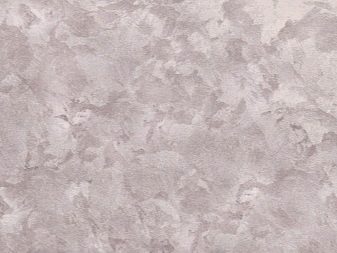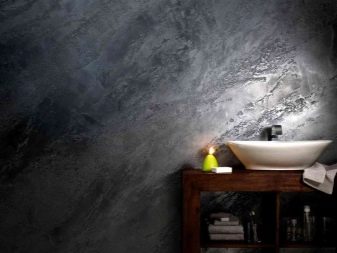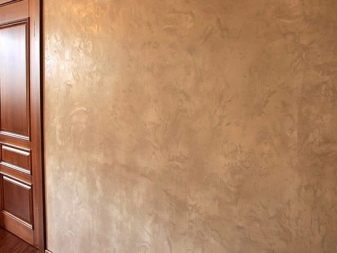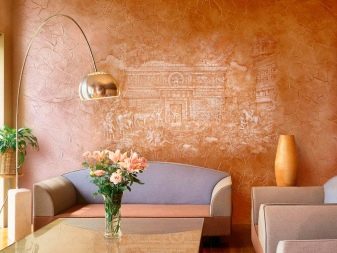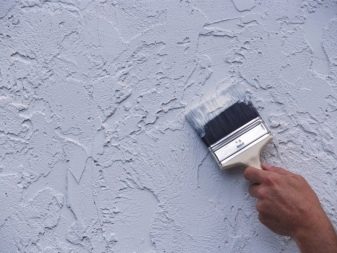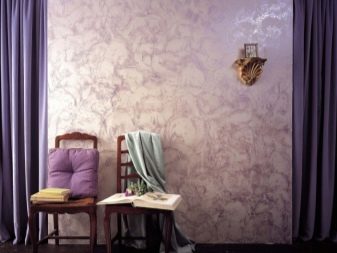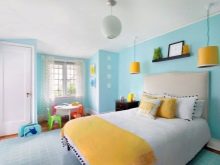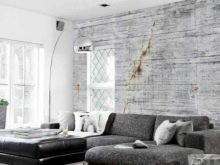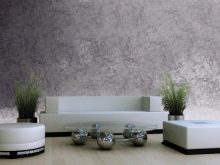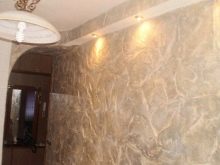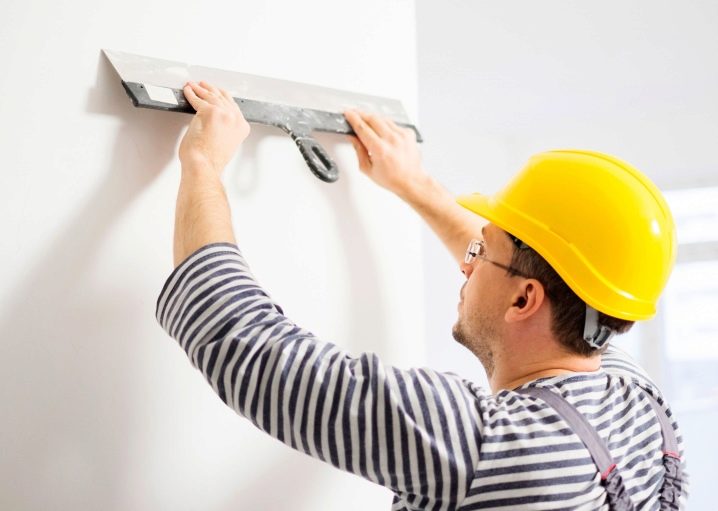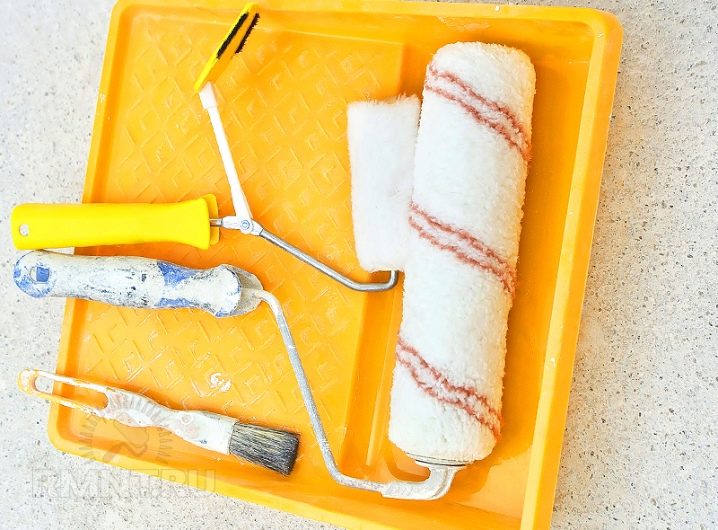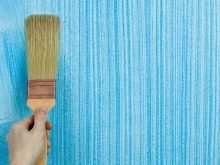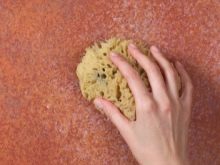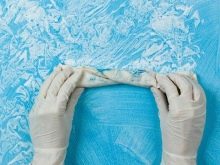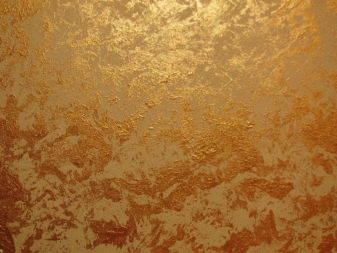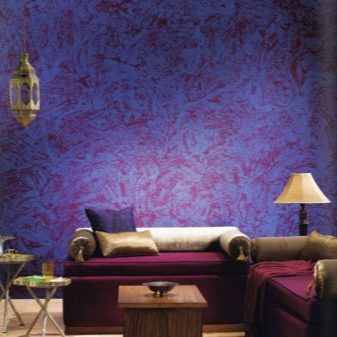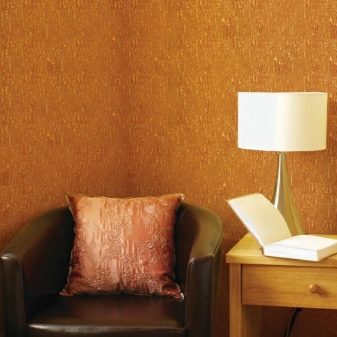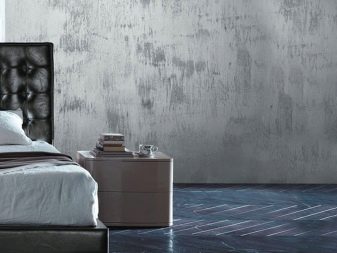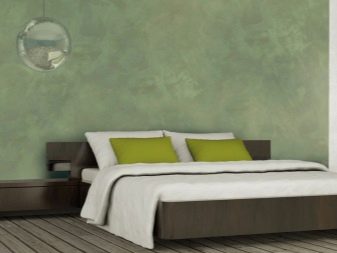Decorative paint for walls: how to choose the best?
A popular option for interior wall decoration is painting. With the help of a decorative coating, you can realize the most daring design ideas. How to choose the best paint from the variety of its types?
Special features
Decorative paint copes with the task of an interesting design of the walls. With the help of such a finishing material, it is possible to create an imitation of various types of surfaces and textures. There is no strong difference in the composition of the decorative coating and other painting compositions for the walls. The only difference is that the decorative mixture is more dense and contains some special additives.
With the help of ordinary paint is harder to achieve the original coating and even more so imitation of various textures. To create an interesting effect, it is necessary to apply special technologies of applying the usual coloring composition, when the decorative composition allows you to create an interesting coating without much effort.
With the help of a decorative mixture you can paint the surface under wood, silk, velor, metal and so on. To achieve this effect, allow special additives in the composition of the finishing material and the solvent, which is used to dilute the coloring composition. The solvent contains a special plastic element.
The special composition changes the properties of the coloring mixture during drying, due to which various patterns are formed on the surface.
The decorative coloring structure has quite a lot of advantages.
Consider its main advantages:
- Low consumption. In order to cover one square meter of surface, decorative paint will need significantly less than decorative plaster or ordinary paint and varnish mixtures. Due to the economical consumption, the cost of interior walls is reduced.
- The weight of the mixture. Such a finishing material is much easier than other types of wall coverings. Low weight greatly facilitates repairs in the apartment.After finishing the applied composition will not create an additional load on the walls.
- Long service life. Good quality finishing material will last for many years without losing the original appearance (without burnout, cracks or peeling).
- A variety of shades and textures.
- Antistatic. This coating does not attract and does not collect dust.
- Health safety. Decorative coatings are absolutely eco-friendly, as they consist only of natural ingredients.
- Ease of application.
Like all finishing materials, decorative paint has its drawbacks.
The disadvantages include:
- Careful preparation of the surface before painting. Most types of decorative mixtures should be applied on absolutely flat walls. The process of surface preparation can be quite time consuming.
- Paint does not increase the level of sound and heat insulation.
Kinds
The number of types and methods of classification of decorative paint is quite large.
All mixtures of this type can be divided according to the method of application into the following groups:
- for exterior walls;
- for interior decoration.
It is worth noting that some formulations are suitable for repair work both inside and outside the room.According to the composition and some special properties, there is another classification of decorative paints.
Alkyd
To alkyd mixtures include oil and enamel paints. Suitable for both interior and exterior. Such mixtures have a rather pungent odor and dry for a long time; therefore, they are most often used to paint the exterior walls of buildings.
The advantages of this material include wear resistance and moisture resistance. Also, this paint is not exposed to direct sunlight and does not fade. The disadvantages of the material are poor alkali resistance and fire hazard.
Suitable for woodworking, as well as for metal and plastered surfaces. Before applying the coloring composition is diluted with turpentine or linseed oil. If the paint is used for interior decoration, before painting the room must be well ventilated. This contributes to a good adhesion of the coloring composition and the treated surface. For application you can use a roller, brush or paint sprayer.
Glue
The basis of the adhesive mixture is water.Additionally, polyvinyl alcohol, cellulose, casein and starch may be included in such paints.
After painting such material forms a porous surface that promotes good air exchange (the walls “breathe”). However, with high humidity, mold can form on the surface.
For this reason, glue dye mixtures are recommended for use on walls in dry rooms with good ventilation.
Such a finishing material is usually sold in the form of a powder, which must be diluted before use in water to obtain a coloring mixture.
There are several types of adhesive mixtures:
- Casein. When applying such a material on concrete, brick or plaster a matte surface is formed, the strength of which only increases with time.
- Dextrinated. The composition includes bone glue. It has a low level of moisture resistance.
- Polyvinyl acetate. This type of paint is used mainly for the ceiling. The mixture is very sensitive to moisture and can eventually completely wash off. The advantages of the material include low cost and lightfastness.
Water emulsion and emulsion
The basis of this composition is water, binding elements and pigments. When applying the paint to the surface, the water in the mixture evaporates, which leads to the formation of a polymer film.
After complete drying of the walls they can be washed. Moisture on the surface does not penetrate into the coating, but simply evaporates. Such paints are fireproof, do not peel off over time, are easy to apply.
In turn, water-based coatings are divided into:
- Acrylic. Acrylic resins included. One of the most popular types of paint. It is characterized by high strength, moisture resistance, elasticity and wear resistance.
- Latex. High quality paint. This ink mixture can be applied in one layer. Finishing material does not fade in the sun and is resistant to various external influences. The disadvantage of this paint can be called a high cost.
- Silicate. The composition of such mixtures include liquid glass and colored pigments. This finishing material is quite durable - the service life can be twenty years. After drawing on a surface forms a protective layer. Protects wooden surfaces from fire.Ideal for exterior wall decoration.
After drying, decorative paints may have a different structure. Consider some types of coloring compositions that have an interesting texture and original appearance.
Flock
The composition of this finishing material includes multi-colored flakes (flocks), which allows you to get a bright finish. Such material masks small surface defects. First, a base layer of adhesive composition (component of flock paint) is applied to the wall. Then flocks are applied to the surface with a special pistol. After the paint dries, the surface is coated with acrylic varnish.
Mosaic
The composition of the material includes granules of different colors and sizes. Due to its granular structure, such a dye can fill small irregularities in the wall. Easy to apply. Before drawing it is not required to carry out difficult preparatory works of a surface.
With special effects
Textured paint has a special technology of application, which involves the use of special tools. To obtain the walls you will need a texture roller and a figured spatula.Relief paint can imitate a variety of textures.
The most popular coatings are:
- Under the stone. A popular option is the imitation of the structure of granite. The composition of the paint does not include granite chips. This effect is achieved due to the color acrylic bubbles that are present in the coloring mixture.
- Under the concrete. Such a structure of the surface will look great in the interior in the style of a loft.
- Chameleon. The surface changes color at different angles and when the light level changes. This effect allows you to visually enlarge the room.
- With mother-of-pearl shimmer. This coloring composition is applied to the base, which can be made in absolutely any tone. Decorative paint with the effect of mother of pearl misses the color of the base and additionally creates a silvery glow.
- Under the metal. A good option for finishing the premises in high-tech style.
- Imitation velvet. Due to the solid colored particles that are present in the paint, this coating is visually similar to the fabric.
- Natural surface. There are many types of coloring compositions with different particles: sand, shells, shiny minerals, and so on.
- Under the old days.Most often with this effect they produce aerosol decorative paints.
- Fluorescent. Paint with the effect of glow in the dark. During daylight, the coating accumulates light and is able to give it away in the dark for some time.
- Imitation of decorative plaster.
Palette
The color palettes of decorative paints have a wide range of colors. Shades can be both standard (monophonic), and with various decorative effects that mimic different types of surfaces.
Consider the most popular shades of decorative paint:
- Silver.
- Metallic. Simulates a metal surface.
- Gold. Perfect for interior decoration in a classic style. Creates an atmosphere of luxury and grandeur.
- White paint. Most often used as a base before applying the textured layer.
- Turquoise.
- Silk effect (beige, pink, golden yellow).
- Light pink.
- Pale blue.
The peculiarity of decorative coloring compositions is that using the method of application, as well as depending on the type of surface, you can change shades. Certain types of such a finishing material are composed of particles of different colors,which gives the effect of non-uniform coverage. Also, the color can flow or change at different angles (chameleon).
Manufacturers Overview
Before choosing a paintwork material, it is advisable to get acquainted with the most famous manufacturers. The most popular are Italian, German and French paints, which are of high quality.
It should be noted that the quality of finishing materials produced in Russia are not inferior to these top sellers.
- In Russia, one of the leaders in the production of decorative paints is factory Dessa Decor. The company is ready to offer high quality decorative finishing materials at affordable prices both wholesale and retail.
- Ferrara design - a major manufacturer and supplier of decorative coatings. The Italian company offers luxury decorative paints at prices only slightly higher than Russian ones, which favorably distinguishes Ferrara Design from other Italian manufacturers.
- German factory Kreidezeit NaturFarben GMbH on the market of finishing materials is represented for more than 20 years. Decorative paints of this company are made exclusively from safe natural ingredients.
- Clavel Company in Russia is the leader among French manufacturers of decorative coatings.Clavel offers high-quality luxury finishing materials made using a unique technology.
How to choose?
In the modern market of finishing materials there are quite a few varieties of decorative paints, which differ in composition and properties.
To choose the right coloring composition, it is necessary to consider the following factors:
- Appointment room.
- Surface application. It is important to take into account its type (for walls or ceiling), the type of finish (exterior or exterior) and the material on which the paint will be applied.
- Interior design style.
- Paint quality.
- Manufacturer.
- Colour.
- The desired texture.
The ink mixture has a number of features that you should pay attention to before buying.
The following characteristics must be considered:
- The degree of brilliance. Matte paint is perfect for walls with small cracks. Glossy coloring mixture can make the room visually larger.
- Transparency. Cover paint retains its tone and completely hides the base on which it was applied. Lessiruyuschaya (translucent or transparent) does not overlap, but only slightly changes the tone of the base.
- Texture It will help to hide the irregularities of the wall.
- Coupling surfaces. The degree of adhesion affects how well it will be applied to the wall and how it will interact with the surface. The life of the paint depends on it.
Appointment room or room is also important when choosing a finishing material. Eco-friendly paints without harsh odors that do not emit harmful substances are ideal for a child's room. Whether the finishing material has such properties can be specified on the label.
For a loft-style living room, you can use paint with a concrete imitation effect. For the bathroom and kitchen a suitable solution would be alkyd or latex paint. These types of finishing materials have a high level of moisture resistance. In addition, they contain antifungal components.
For the bedroom you can use matte water-based paints. Such finishing materials are absolutely safe for health, as they do not contain toxic substances.
For the hall the best option would be an acrylic painting mixture. Acrylic paint has a wide range of colors, so you can get interesting design solutions for wall decoration in the living room.
To finish the corridor you need paint that will be resistant to mechanical stress and has a long service life. Acrylic, latex and silicate paints quite correspond to such requirements. Choosing the right color, preference should be given to light shades.
Recommendations for use
Before finishing, it is necessary to prepare the surface for painting. First you need to remove the old coating. In the presence of deep cracks plaster the wall.
Most types of decorative paint must be applied on a flat surface. To level the walls you can use putty. Obligatory processing stage before painting is a primer or abrasive treatment (depending on the degree of adhesion).
The tools with which the finishing work will be carried out are selected depending on the type of coloring matter.
May need:
- rollers with different pile;
- trowels;
- sponges;
- rags;
- paint gun;
- cotton wipes;
- brushes;
- stencils.
The paint should be applied at a temperature of from +5 to +25 degrees. At high temperatures the material will dry quickly.The lacquer coating is applied only after the complete drying of the coloring mixture.
Certain methods of applying a finishing material can achieve interesting effects.
The following tools are used:
- Brush. Using a brush, you can apply strokes one on top of another, which will allow you to create an unusual texture. Suitable for creating three-dimensional patterns.
- Sponge. Helps to achieve a flat and smooth surface. Ideal for creating a metallic surface or an overflow effect.
- Rag. It will help to give the surface an interesting and unique shape. You can create the effect of imitation stone or other interesting patterns and structures.
The technology of applying the finishing material "Golden Fleece" allows you to achieve a relief golden surface. At the first stage, a white paint is applied to the surface with a rubber spatula. After the white layer has dried, tinted paint is applied to it. Then the top layer is sanded with sandpaper until white paint appears. The final stage will be the procedure of coating the surface with varnish.
The effect of the water surface can be obtained using the technology "enchanted lake." The decorative coating is applied with a fur roller.When the finishing material is dry, it is necessary to apply a pattern with the help of a template and a spatula made of rubber. To create this effect, you can buy a ready-made kit, which includes all the necessary components and a stencil.
Interesting examples in the interior
- Chameleon paint creates an incredibly beautiful silk texture.
- With the help of textured decorative paint you can imitate the most unusual textures. The wall in the bedroom looks like it was covered with gold.
- Interior paint can create the effect of sand dunes.
- Walls with mother-of-pearl in the bedroom.
How to paint the walls with decorative paint, see the following video.
